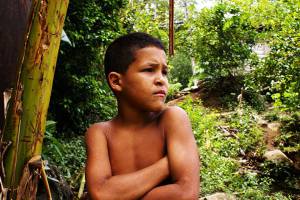I am almost sixty years old and I come from a rural area in Cuba. My parents were labourers, my father’s father was a landless peasant, my mother’s parents were peasants and landowners. I remember there was an intermittent stream flowing through their land forming small pools that provided water for cattle throughout the entire year.
In the times of little rainfall, from March to May, the cattle was gathered in our farmyard so it could be provided with water extracted from a well by oxen. The well served as a water supply for the entire house.

In 1960s my grandfather and my uncles bought a turbine propelled by a petrol engine and drilled another well for irrigation. This way one part of the farm remained irrigated and was used for agricultural production, including a few cane fields. The stream pools were levelled out and rice was planted in them while the cattle remained at the rocky pastures and on a small mountaintop where we would pick wood for making mattock handles, sticks and other material for various purposes.
The entire farm was surrounded by mastic and pine nut trees in its perimeter. We called them sleeves as they helped us guide the cattle. I remember the farm being always green. Today the place resembles a desert from January to the early summer. Rainfalls come in the second half of June, since the May rainfall known as the San Juan Summer turned into a mere childhood memory.
I remember from our history classes we took in primary or secondary school, when we were learning about the Pre-Columbian period, textbooks and teachers mentioned that the then communities used to move to a different place after a certain period of time due to draught, hunger and diseases. This happened in regular intervals of 60 to 100 years.
I remember my family members making small observations about certain signs that pointed to the “climate change”: the cyclones of 1926 and 1944, severe draught in the 1940s, the Flora Cyclone in 1963 and 1981 that caused great inundations as well as extreme climatic conditions, e.g. heavy rainfalls, hurricanes and draughts that recurred approximately every 20 years. They would also point out that as of 1980 some drainage basins had shown more or less severe negative balance every 10 years.
The signs of a climatic change would occur in shorter periods of time, the intervals are becoming shorter and shorter and the extreme situations more and more severe.
Today we can observe extremely high temperatures in the tropics and subtropics, extreme cold in the north and south, as well as new records that used to repeat every 80 and 100 years in the past. Now we can see them one to three times per month. Summers are nearly without rainfall; rain comes in November as we saw in 2015. Hydrological drainages are at their minimum levels. Cyclones turn into hurricanes within a few hours due to the high temperatures at the Caribbean Sea. Sea intrusions, inundations, landlines and draughts that were rare in the past have now become a part of daily news.
Will it be possible to leave to our future generations a favourable climate instead of the climate change we are experiencing now?

Leave a comment